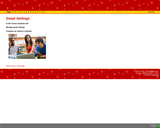
This is a lesson for students to add settings to Gmail.
- Subject:
- Education
- Educational Technology
- Material Type:
- Activity/Lab
- Author:
- Cheryl Voelker
- Date Added:
- 03/08/2018

This is a lesson for students to add settings to Gmail.
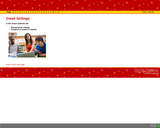
This is a lesson on creating gmail settings.
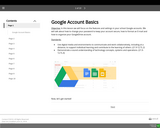
This lesson takes students through the importance of changing Google passwords, changing their Google passwords, formatting an e-mail and organizing their Google Drive.
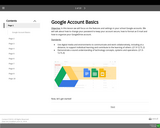
Basics of Google E-mail, Google Drive and sending a professional E-mail.

This hyperdoc lesson will allow your students to work together to building a classroom community specifically in Google Classroom. Enjoy!
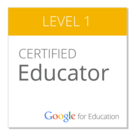
Adapted from the Google for Edu Training Center Materials:When students turn in worksheets and other physical work, we try to organize it neatly in folders or drawers. We use different colors, labels, stickers, and more to easily find student work later on. Today, we can use a variety of tools to collect and organize students’ digital work too.Simplify the process of exchanging work between educators and learners by using Google Classroom and Drive. These tools can help teachers stay organized.Students can save time and energy turning in assignments in the digital classroom as well.Using Google Classroom, they can submit assignments with the click of a button.Using Drive, they can easily move documents to a folder shared with their teacher, or create a document in that folder to begin with. In this lesson, we’ll hear from a few teachers who are using Google tools to collect assignments in their classrooms.
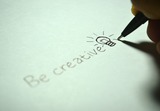
Unit Overview: The Writers on Writing Unit engages students in reading, analyzing, and creating literacy narratives, or stories about learning to read and write. The unit begins by asking students to view and read literacy narratives, and to analyze author’s literacy narratives through annotation, discussion, and writing a formal analysis essay. As students go through the narratives, they are asked to analyze author technique and purpose, paying close attention to style, syntax, and organization in preparation for writing their own authentic literacy narratives and ultimately creating digital storytelling projects about those narratives. By the end of this unit, students will have composed analysis writing, creative nonfiction, and multimedia stories. They will have had the ability to select certain reading assignments, to work in groups and with partners to brainstorm, edit, and revise, and they will have had guided writing lessons on composing strong sentences. Days 11 to 15 Overview: These plans are for Days 11 to 15 of the Writers on Writing Unit. In this lesson, students expand their written literacy narratives into digital storytelling skills, drawing on all previous lessons and professional videos and narratives to compose their own multimedia videos for presentation. Image source: "Be creative" by Ramdlon on Pixabay.com
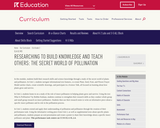
Grade 2: Module 3 of the EL Education K-8 Language Arts Curriculum. In this module, students build their literacy and social-emotional skills through the analysis of literary and informational texts, as they engage in a study of pollination and pollinators. For more information on getting started with the curriculum, please visit https://curriculum.eleducation.org.
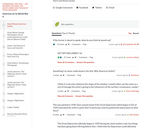
This art history video discussion examines Grant Wood's "American Gothic", 1930, oil on beaver board, 78 x 65.3 cm / 30-3/4 x 25-3/4 inches (The Art Institute of Chicago).
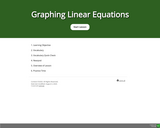
This is an introduction about graphing linear equations in slope intercept form.
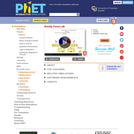
Visualize the gravitational force that two objects exert on each other. Change properties of the objects in order to see how it changes the gravity force.
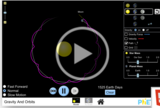
In this simulation students will move the sun, earth, moon and space station to see how it affects their gravitational forces and orbital paths. Visualize the sizes and distances between different heavenly bodies, and turn off gravity to see what would happen without it!
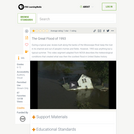
In this video segment adapted from NOVA, a meteorologist explains how an unusual weather pattern led to one of the most devastating floods of this century.
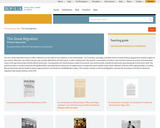
This collection uses primary sources to explore the Great Migration. Digital Public Library of America Primary Source Sets are designed to help students develop their critical thinking skills and draw diverse material from libraries, archives, and museums across the United States. Each set includes an overview, ten to fifteen primary sources, links to related resources, and a teaching guide. These sets were created and reviewed by the teachers on the DPLA's Education Advisory Committee.
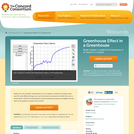
Build your own miniature "greenhouse" out of a plastic container and plastic wrap, and fill it with different things such as dirt and sand to observe the effect this has on temperature. Monitor the temperature using temperature probes and digitally plot the data on the graphs provided in the activity.

Explore how the Earth's atmosphere affects the energy balance between incoming and outgoing radiation. Using an interactive model, adjust realistic parameters such as how many clouds are present or how much carbon dioxide is in the air, and watch how these factors affect the global temperature.

This lesson will help students learn proper handwashing techniques.

A short tutorial for using Hardy Weinberg for AP Biology
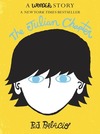
Objective: I can identify and explain the theme of a story.After reading the book Auggie and Me: A Julian Chapter as a class (or having students read it), students are going to work in a group to create a headline for the book that captures the core idea or theme that we want to remember. Then, once they have their headline, on their own, they will take their headline and create an article that explains or supports the headline. Finally, they will work through the writing process to publish their article. *This activity should take 2-3 hours to complete.
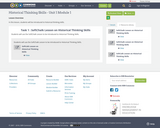
In this lesson, students will be introduced to historical thinking skills.